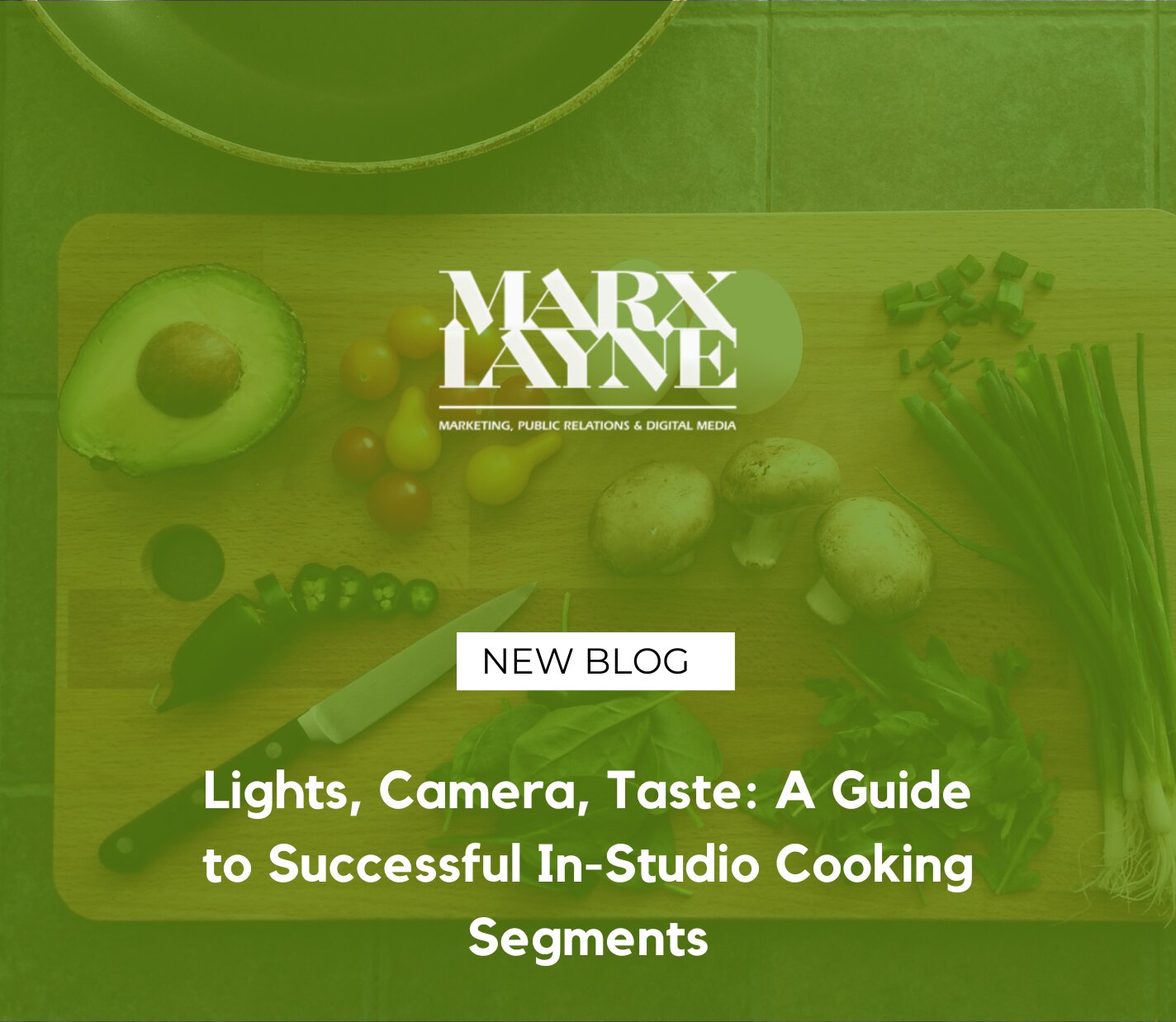
July 23, 2025
Lights, Camera, Taste: A Guide to Successful In-Studio Cooking Segments
Lights, camera, cooking! In-studio TV segments offer a powerful opportunity for chefs and restaurant owners to showcase their culinary skills and entice new customers. This guide breaks down how to make the most of your moment on air—from prepping ingredients and perfecting presentation to telling your restaurant’s story and ensuring your dish is ready for its close-up. Whether you're working with a PR team or going it alone, these practical tips will help you shine on camera and leave viewers craving more.
By Michael Odom, Senior Vice President
In-studio cooking segments are an incredible opportunity for chefs and restaurant owners to showcase their culinary talents, highlight signature dishes, and give viewers a reason to visit. Whether you are cooking live on air or simply displaying a curated selection of menu items, the way you prepare and present can make or break your media moment.
Here is a guide to getting the most out of your time in front of the camera and leaving a lasting impression on both viewers and on-air talent.
Bring the Full Culinary Journey From Ingredients to Plated Dish
If you are cooking live during your segment, bring your dish to life by showcasing it in stages. Start with the raw ingredients to help viewers understand what goes into the recipe. Then walk them through key preparation steps, leading up to a beautifully plated final product. This visual storytelling approach not only educates but builds anticipation and excitement.
Keep in mind that most segments move quickly. You will need to bring partially prepped components such as sauces already made, garnishes ready to go, or proteins partially cooked to move efficiently through your demo. Think like a cooking show pro.
Everything Must Be Edible
No matter what you are showcasing, the most important rule is simple: the food must be fresh, edible, and visually appetizing. Chefs and restaurant teams sometimes make the mistake of pre-plating dishes the night before an early morning segment, but food that sits overnight can appear stale, dry, or unappealing on camera. More importantly, it may not be suitable for on-air talent to taste, which means missing out on that valuable moment of genuine, positive reaction.
If you are not cooking live, plan to use the in-studio kitchen if available to finish or reheat items. This ensures your food is fresh, hot, and camera ready.
Maximize the Table Display
Whether you are featuring one dish or a full spread, make sure your display is visually appealing and representative of your brand. Use the available table space wisely. Feature a variety of menu items, including food and beverage if possible, to show depth and appeal to different tastes.
Bring decor items to help frame the food and subtly reinforce your brand. This could include:
- Small signage with your restaurant’s name or logo
- Menu printouts or branded packaging
- Table linens that reflect your brand colors
- Props that speak to your restaurant’s theme, such as rustic boards, fresh herbs, or barware
Think of the table as your restaurant’s mini pop-up. It should look delicious, well styled, and intentional.
Come Prepared With Everything You Need
Many first timers assume the studio will provide everything they need. They will not. You must bring all the cooking utensils, pans, knives, serving spoons, mixing bowls, and plating tools needed for your segment. Always pack extra napkins, gloves, paper towels, serving plates, and anything else required to prep and serve.
Also, know that space in the studio is often limited. Typically, only one chef or one chef and one spokesperson is allowed on air. Be mindful of the footprint you are occupying and work closely with your PR team if you have one to understand those limits ahead of time.
Practice Before You Go Live
Treat your segment like a performance. Practice preparing your dish in advance for staff, colleagues, or friends. Time yourself. Practice speaking while prepping. Make sure you can clearly explain what you are doing while keeping your energy up. This makes for a smoother, more confident on-air delivery.
Arrive Early. Never Be Late.
Live television runs on a tight schedule. Arrive early. Never late. You will need time to unload, set up your display, get mic’d, and prep any final touches. Stations reserve the right to cancel segments if guests arrive late or are not ready, and you may not get another shot.
Your PR team will typically help you manage timing and coordination, but it is still your responsibility to be camera ready and punctual.
Know What You Want to Say
Be ready with clear, concise talking points. Prepare to speak about:
- Your restaurant and what makes it unique
- The dish you are preparing or displaying
- Key ingredients and preparation tips
- What viewers can expect when they visit
- Any seasonal specials, events, or promotions
A great segment balances showmanship and substance. Food that looks and tastes great paired with a compelling story will draw people in.
For Restaurants Without a PR Team
Not every restaurant or chef has a dedicated PR team to guide them through the process, and that is okay. The tips above are designed to help anyone, whether you are working with professionals or managing the segment yourself. With careful planning, a little rehearsal, and a clear message, you can deliver a segment that draws attention and leaves viewers hungry for more.
For more information about Marx Layne’s restaurant and hospitality marketing, public relations and digital media services, contact Michael Odom, Senior Vice President, at 248-855-6777 or modom@marxlayne.com. Visit www.marxlayne.com to learn more.
Share This Story, Choose Your Platform!
Marx Layne is your competitive advantage.
Your reputation and success are our only concerns.
